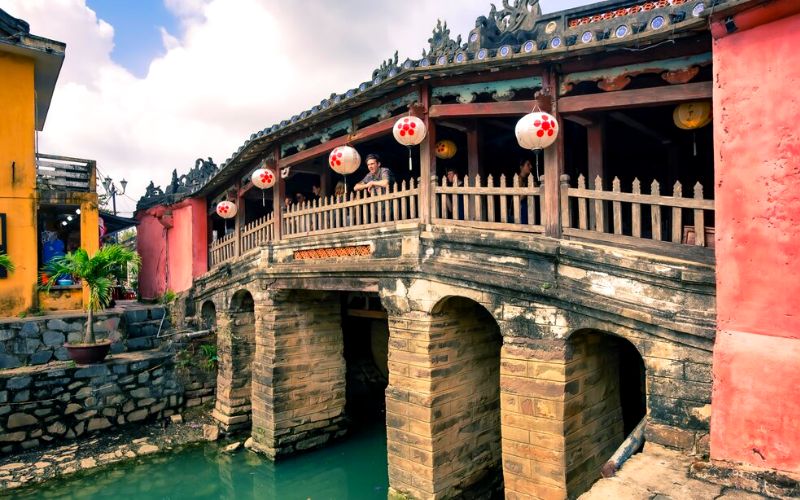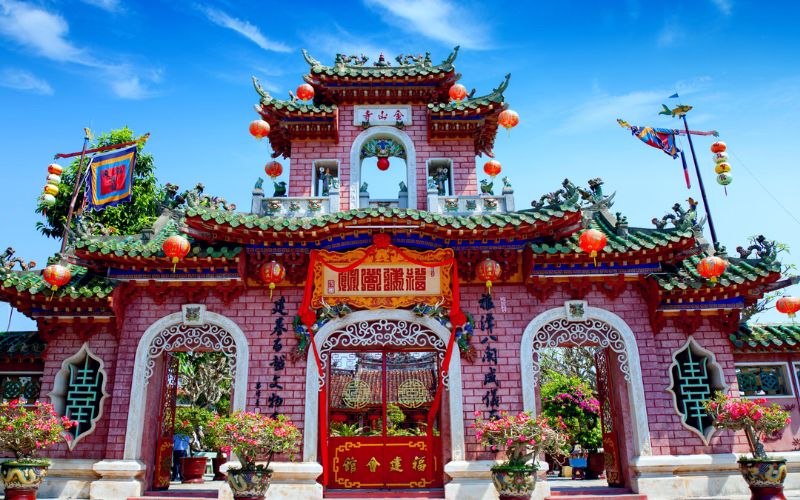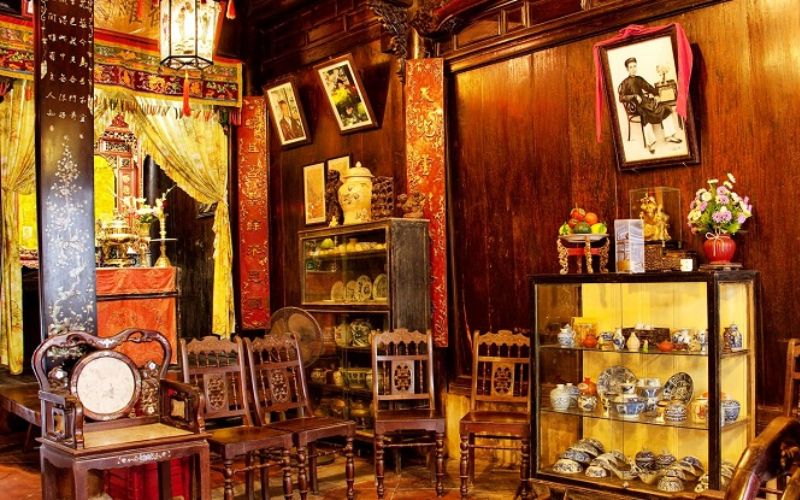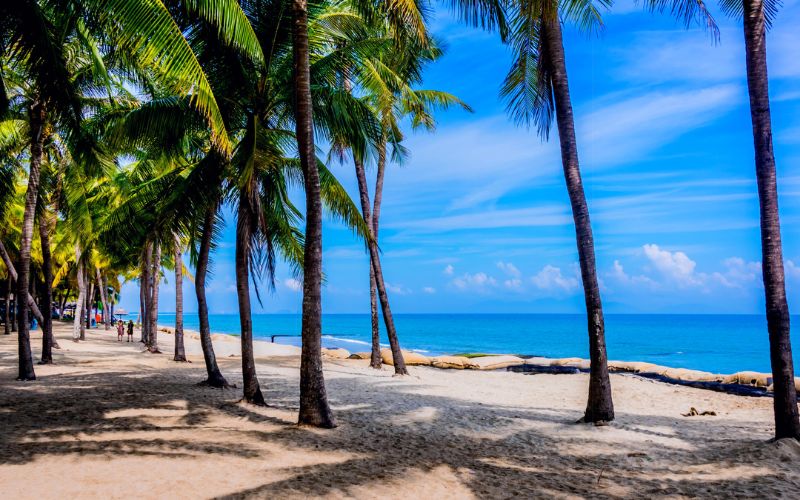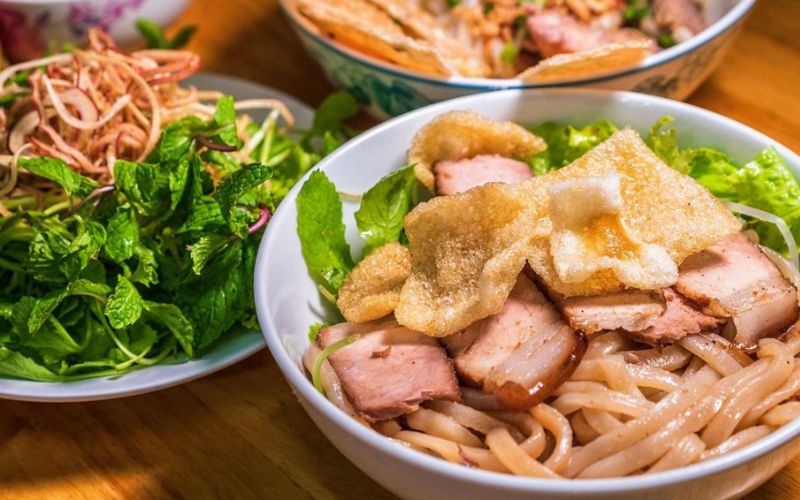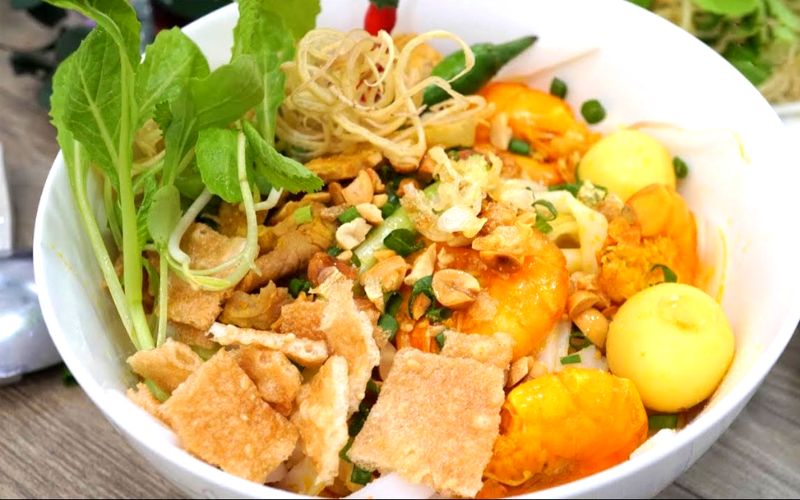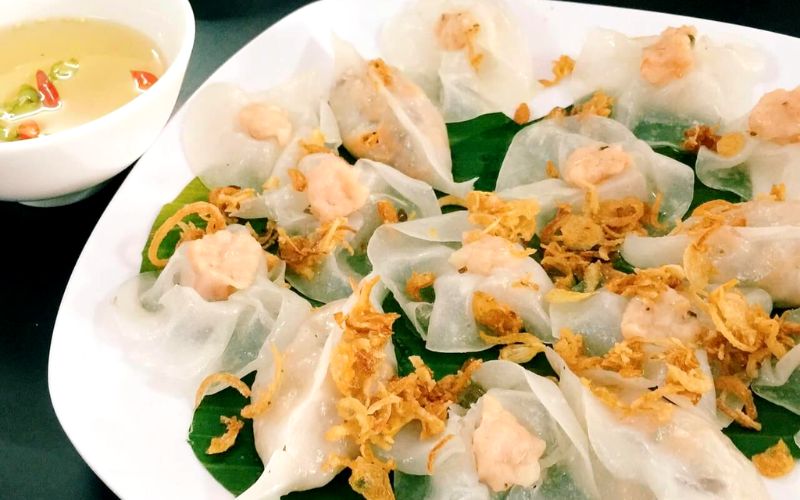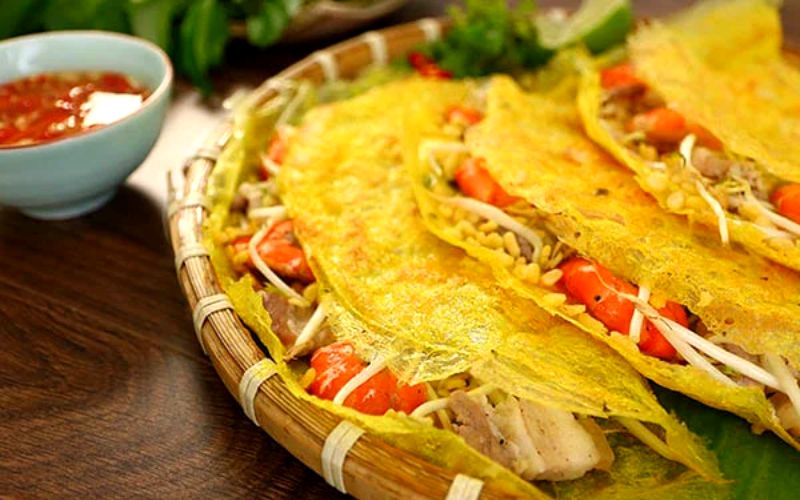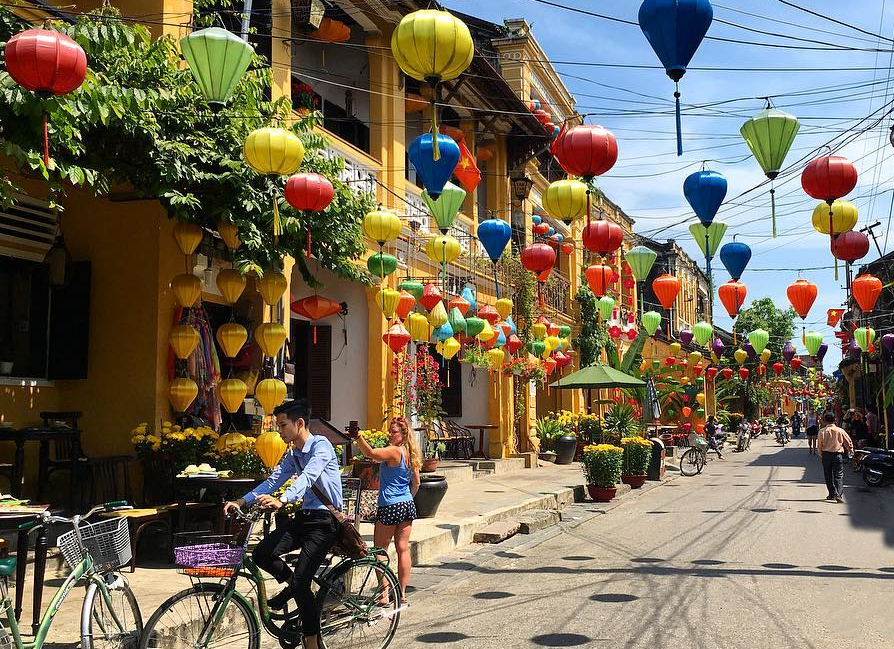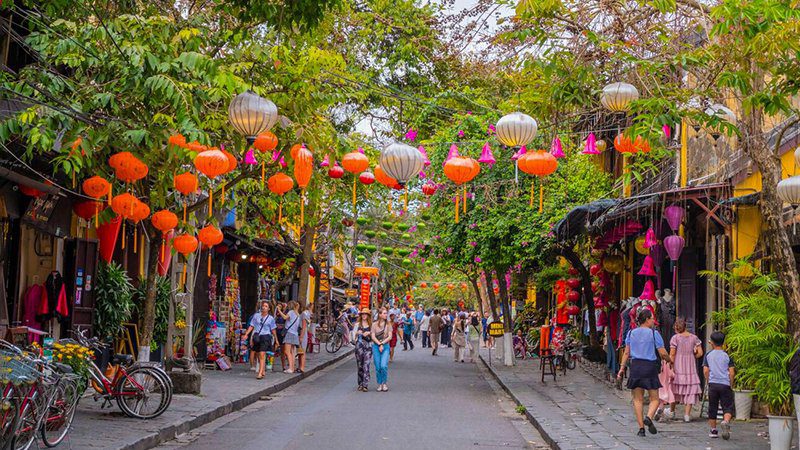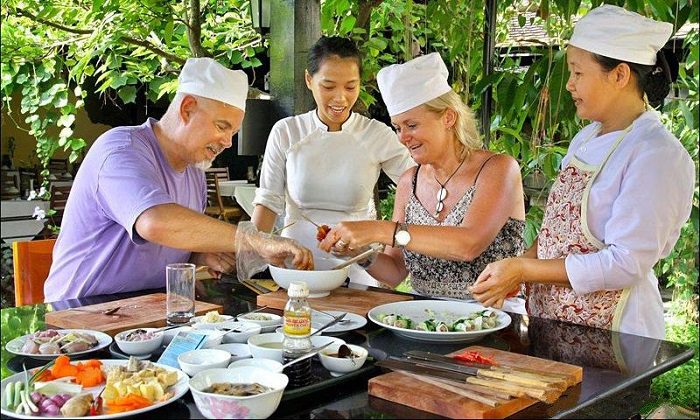Hoi An Ancient Town is located in Quang Nam Province, Central Vietnam. It covers an area of 1,409 km2 and is located on the northern bank near the mouth of the Thu Bon River. Together with the dynamic Da Nang City, Hoi An Ancient Town becomes a must-visit tourist destination in Central Vietnam. Check out the following Hoi An travel guide if you are planning a visit to this peaceful place in the near future.
General Information
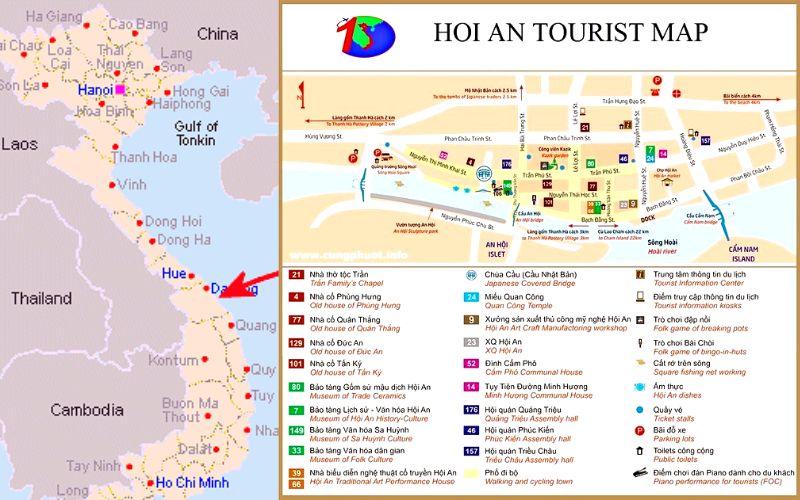
Hoi An Tourist Map
Hoi An is one of Vietnam’s most grateful and romantic towns. It began as a seaport for the ancient Champa kingdom before becoming one of Southeast Asia’s major international ports from the 17th to the 19th centuries. Parts of the city still look much the same as they did 150 years ago, with hundreds of old houses, some of which are over two centuries old and made of precious wood in the traditional style.
The town was designated a UNESCO World Heritage site in 1999, and many of its original houses and other features have been preserved. Taking a city tour around Hoi An, You can discover authentic Vietnamese architecture that is harmoniously integrated with other architectural styles influenced by the Japanese and Chinese traders who settled here in the past.
Are you planning a trip to this vibrant ancient town? The information in this article Hoi An travel guide will surely help you.
Hoi An Weather & Best time to visit
Weather is one of the most important things to keep in mind when travelling. In the article Hoi An travel guide, we will provide you with the most useful information about the weather and climate in Hoi An.
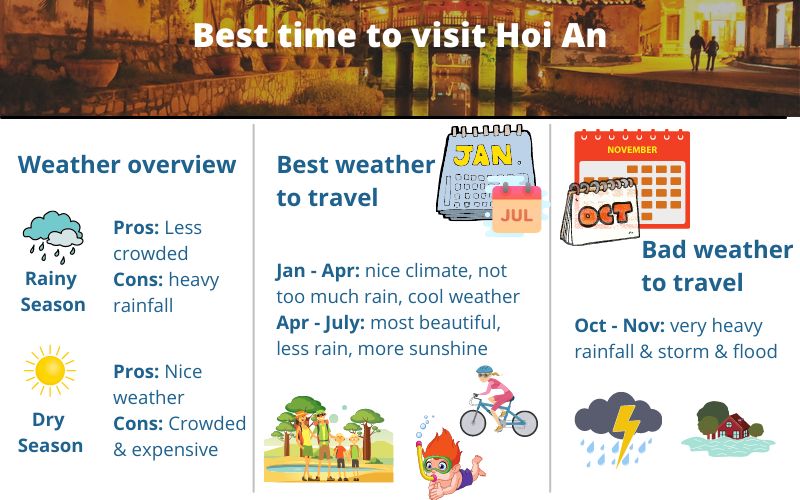
weather in Hoi An
The weather in Hoi An is pleasant all year, with an average temperature of 29 degrees Celsius. The city has only two seasons: the rainy season (September – December) and the dry season (January – March) (January – August). The best time to visit Hoi An is from February to April when the weather is mild and ideal for sightseeing.
September to November seems not to be good months to visit Hoi An because it rains every day and flooding can occur at any time. Typhoons can submerge the entire town, and attractions are only accessible by boat.
Getting to Hoi An
There is no airport or train station in Hoi An Town. The only way to reach town is by car. Fly to Da Nang from Hanoi, Ho Chi Minh City, and other major Vietnamese cities, then transfer to Hoi An. The distance between Da Nang and Hoi An is 30 kilometers, and public buses run frequently, with pick-ups every 20 or 30 minutes. You can combine Hoi An with other destinations when traveling to Central Vietnam.
Getting around Hoi An
Because Hoi An is a small town with flat roads, walking is the best way to explore the peaceful town. While strolling through the streets, you can see beautiful lantern vendors, ancient houses, and pagodas, as well as sample delectable local cuisine and interact with other travelers. Motorcycles are prohibited from the center of the old town from 9 a.m. to 11 a.m. and 3 p.m. to 9.30 p.m. Vehicles are not permitted at the Hoi An Lantern Festival. If you visit during the festival, taking a boat ride on the Hoai River will be a highlight of your trip.
You can rent a motorcycle or bicycle to explore the surrounding areas and beaches. For safety and personal reasons, you can hire your own car with a trustworthy driver. With a team of professional drivers, we provide not only helpful Hanoi travel guides but also car rental services in Vietnam.
Where to Stay in Hoi An
Since Hoi An is a tourist destination that attracts millions of tourists each year, there is a wide range of accommodations here. There are plenty of great and affordable hostels, as well as many other great options such as traditional homestays, affordable Airbnb, and even high-end hotels and resorts. You should book a room in advance in case hotels run out of rooms during the high season. Otherwise, you can look for some budget-friendly choices with are far from the center of the town.

Vinh Hung Riverside Resort
Best Places to Visit
Hoi An is a top pick destination in Vietnam which is always included in top Vietnam tours. You can spend your free time exploring ancient houses and traditional villages, learning to cook Vietnamese cuisine, and sampling local specialties from street vendors. To visit Hoi An Old Town, you must purchase a ticket, which is inexpensive and includes admission to many attractions.
Inside the Town
Japanese Covered Bridge
-

Japanese Covered Bridge
The Japanese Covered Bridge is a hidden treasure within Hoi An Old Town. Japanese merchants built it at the end of the 16th century. It served as a link between the Japanese and Chinese communities on the western side of town. This bridge was designed in the style of a Japanese pagoda. It depicts sculptures of a dog and a monkey, as well as the fact that the Japanese Covered Bridge was begun in the year of the dog and completed in the year of the monkey. On the northern side of the bridge, there is a small but sophisticated temple. This temple is dedicated to Tran Vo Bac De, the Taoist God of the Weather.
Location: at the west of Tran Phu Street
Fujian Assembly Hall (Phuc Kien)
Fujian Assembly Hall was built around 1690 and was originally a gathering place for Fujian people from China. In 1697, they converted it into a temple to worship Thien Hau, the goddess of the sea who protects sailors from danger. Fujian Assembly Hall’s colorful entrance gate and courtyard make it a great photo opportunity, especially at sunset.
Location: 46 Tran Phu Street
Chaozhou Assembly Hall (Trieu Chau)
Chaozhou Assembly Hall was built in 1845 by Chinese merchants from Chaozhou (China). It is dedicated to General Phuc Ba, a god of mastering waves so that ships could travel safely on the sea and merchants could prosper.
Location: 92B Nguyen Duy Hieu Street
Cantonese Assembly Hall (Quang Dong)
-

Cantonese Assembly Hall
In 1885, Chinese overseas from Guangdong built this assembly hall. Originally dedicated to Thien Hau Holy Mother and Confucius, it later became dedicated to Guan Gong and the ancestors of Guangdong people who settled in the town.
Location: 176 Tran Phu Street
Hoi An Museum of History and Culture
This museum, which opened in 1989, houses 273 antiques, including pottery, ceramics, bronze, iron, paper, and wood. The exhibitions are divided into three phases: Sa Huynh Culture (before the 2nd century AD), Cham Pa Culture (between the 2nd and 15th centuries AD), and Dai Viet, Dai Nam Culture (between the 15th and 20th centuries AD) (16th-19th century).
Location: 7 Nguyen Hue Street
Old House of Tan Ky
-

Old House of Tan Ky
Tan Ky is the most well-known of Hoi An’s three old houses (the others are Phung Hung and Duc An). This is a 200-year-old Vietnamese family home that has been passed down through seven generations. This house has some unique features, such as a rustic wooden balcony and pulleys to raise furniture when it floods.
Location: 101 Nguyen Thai Hoc Street
Old House of Duc An
There is a wealth of historical information to be discovered in the Old House of Duc An. This was designated as a hotspot for anti-French activities in Hoi An and Quang Nam. The house was used as a bookstore selling political books and was frequented by early Vietnamese independence advocate Phan Chu Trinh.
Location: 129 Tran Phu Street
Old House of Phung Hung
This is the largest of the three old houses in Hoi An, with two floors, and was built in the 18th century. The same family lived in Phung Hung Old House for eight generations.
Location: 4 Nguyen Thi Minh Khai Street
Tran Family Chapel
Tran Tu Nhac, a highly respected official during the Gia Long Reign of the Nguyen Dynasty, built Tran Family Chapel to worship his family’s ancestors. This 1500-square-meter space is sophisticatedly decorated with plants, flowers, and artwork.
Location: 21 Le Loi Street
Hoi An Art Craft Manufacturing Workshop
The workshop brings together many traditional Hoi An and Quang Nam handicrafts, such as weaving mats, weaving fabrics, pottery making, lacquerware, and so on. When you visit the workshop, you can see the excellent skills of the artisans as they create crafts and fine art. Tourists can participate in the craft-making process and purchase souvenirs.
Location: 9 Nguyen Thai Hoc Street
Surrounding Areas
Cua Dai Beach
-

Cua Dai Beach
Cua Dai is one of the best beaches in Central Vietnam for water sports like canoeing, surfing, snorkeling, and kayaking.
Location: 5 km to the east of Hoi An
An Bang Beach

An Bang Beach
Coming to An Bang Beach, you can enjoy the peace and quiet, stroll along the white sand, photographing stunning sunrises and sunsets, and watch the children play on the beach.
Location: Cam An Ward, 3 km to the east of Hoi An
Kim Bong Wood Carving Village
Northerners established this village in the 15th century. Because of the prosperity of Hoi An port from the 17th to the 19th centuries, sophisticated wood carving products in this town such as altars, furniture, and pillars were traded with other Asian and European countries.
Location: Cam Kim Commune, opposite Hoi An Old Town
Thanh Ha Ceramics Village
Thanh Ha was a prosperous village known for its pottery products in the 16th and 17th centuries. Nowadays, people here make products that are primarily used in daily life, such as cups, bowls, jars, flower vases, and so on, in a variety of styles and colors. During your visit to Hoi An My Son Sanctuary, you can spend time here with your children playing with the clay.
Location: 3 km from Hoi An to the west
Cham Island (Cu Lao Cham)

Scuba Diving on Cham Island
Hon Lao, Hon Kho Me, Hon Kho Con, Hon Tai, Hon Dai, Hon Mo, Hon La, and Hon Ong are the eight pristine islets that make up this island. A day trip to Cu Lao Cham Island is recommended to explore the biodiversity, which includes unspoiled jungles, beautiful beaches, colorful coral reefs, and abundant marine life.
Location: Tan Hiep Ward, Hoi An
My Son Sanctuary
My Son is a collection of Hindu-themed ruins dating from the 2nd to the 17th centuries that belonged to the ancient Champa civilization. My Son Sanctuary, like the Great Angkor Wat in Cambodia, is a must-see on any trip to Vietnam or Cambodia. In 1999, it was designated a UNESCO World Heritage Site. The best time to visit My Son is early in the morning before it gets too hot.
Location: 70 km from Da Nang and 40 km from Hoi An
Things to Do in Hoi An
Tourists visiting Hoi An’s ancient town can participate in a variety of exciting activities. One of the most popular activities is strolling through Hoi An‘s winding market streets, visiting old houses, pagodas, and museums. Hoi An is known for its silk, so have your clothes made there. Try on some ao dai – Vietnamese traditional clothing – or whatever you want. Don’t forget to stop by art galleries and eat at one of the restaurants while admiring the timeless scenery. Finally, attend the enchanting Hoi An Lantern Festival, which is held on a monthly basis, take some stunning photos, and purchase a couple of lanterns as souvenirs for relatives and friends back home.
What to Eat in Hoi An
Com Ga (Chicken Rice)
-

Com ga
Hoi An’s specialty and the soul of this atmospheric city is chicken rice. Com ga can be found on nearly every street corner. The local chefs’ meticulous and skillful cooking techniques have elevated the simple rice and chicken dish into a dedicated specialty found only in Hoi An. Shredded chicken, onion, tomatoes, and lettuce are served with seasoned rice.
Cao Lau
-

Cao Lau
This cuisine is influenced by Japanese and Chinese cultures, which were brought to this port city by foreign traders. This dish has some distinguishing characteristics when compared to other Vietnamese dishes: the thick noodle is similar to Japanese udon, the rice crackers and pork are Chinese in style, and the broth is Vietnamese.
In this small town, it is simple to find a restaurant that serves Cao Lau. The best restaurants cluster around Tran Phu Street and the Japanese Covered Bridge.
Mi Quang (Quang noodles)
-

My Quang
This noodle originated in Quang Nam Province and has since become a popular breakfast and lunch dish. Locals prepare this dish with rice noodles, meat, and herbs such as basil, cilantro, scallions, onion leaves, and lettuce. You can customize your Mi Quang bowl with one or more of the following meats: shrimp, pork, chicken, or beef. You can eat this dish with or without broth.
Banh bao and banh vac
-

Banh Vac
The ingredients and cooking methods for these two types of dumplings are nearly identical. Banh bao and banh vac are typically served on the same plate. Banh bao is made with minced shrimp, peppercorn, garlic, green onion, and citronella, whereas banh vac is made with ground pork, mushrooms, and green onion.
Banh xeo (Sizzling cake or Vietnamese pancake)
-

Banh xeo
Hoi An Town’s specialty is banh Xeo. This dish’s main ingredients are rice flour, shrimp, and meat mixed with bean sprouts, onions, and mushrooms. The sweet fermented peanut butter sauce is the heart of banh Xeo. Wrap a small amount of banh xeo in lettuce leaves and dip it in the sauce.
Souvenirs of Hoi An
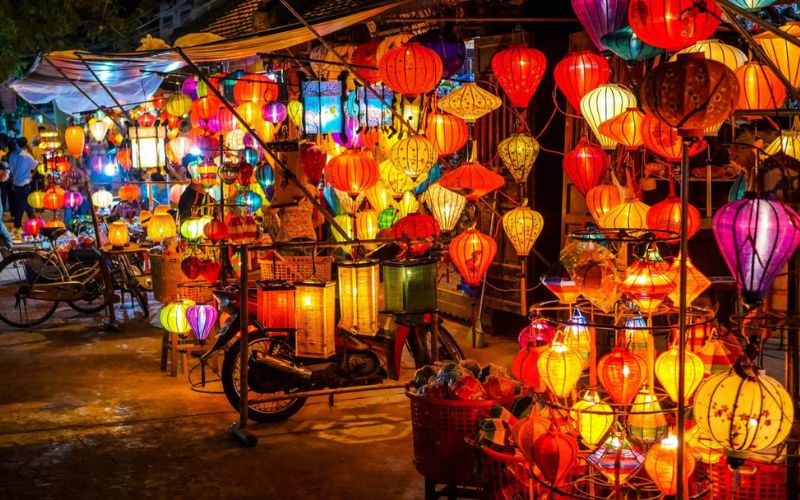
A Lantern shop in Hoi An
This charming town is well-known for its variety of delectable specialties and eye-catching souvenirs. Here you can find rugs from Sapa, Vietnamese essential oils, throw mats, paintings, delicate sketches, jewelry, soap, face oil, wall hangings, and even hand-crafted dresses for babies. And the prices are ridiculously low for a gift shop of this caliber. Pick up a beautiful Vietnamese-themed multi-use notebook on natural unprocessed paper for 65,000 VND or an ornate ceramic tea set for 695,000 VND (30 USD) – a real bargain! Or, for 95,000 VND, a really cute Dumbo mosquito repellent for kids (4 USD).
We hope the information in the article “Hoi An travel guide” will be helpful to you. If you want to have more information and ideas to build an unforgettable itinerary in Hoi An, do not hesitate to contact us!
Start planning your tailor-made tour with 1-1 help from our travel advisors.
- Plan your tailor - made trip with a local expert
- Book securely with money-back guarantee
- Travel stress-free with local 24/7 support

